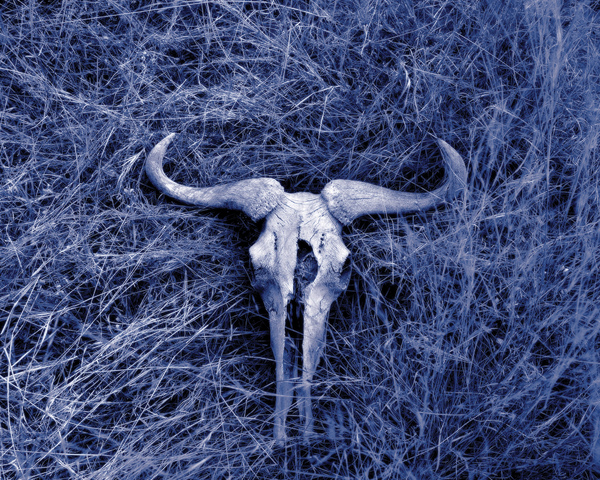Beautiful Bones: Beauty In What Remains
Most people find the bones of animals fascinating. Nature photographers are usually drawn to them like a magnet, and when they are in a particularly beautiful environment, they make captivating subjects. Too often, though, bones are scattered in an unattractive way or they are laying in dirt or underbrush that isn’t especially appealing. In that case, it’s a simple matter of arranging the various elements so they are more pleasing.
When I was shooting along the Skeleton Coast in Namibia, I came upon a whale vertebrae partially buried in the sand, (#1). The moody sky provided a great background, and I used a wide angle lens placed very close to the foreground (I was about 4 ft away) to create a dynamic perspective. Notice how the background compliments the large bone and at the same time there’s nothing at all that competes with it for attention. Notice also how the whale vertebrae seems disproportionately large compared to the rest of the picture. This is typical of the effect of using a wide angle lens positioned very close to the foreground element.

All Photos © Jim Zuckerman
I used the same strategy in the photo of a skull and antlers of a Tule elk in California, (#2). While the grass provides pronounced texture, it is unobtrusive and doesn’t interfere with the graphic design of the subject. In this case, I used low angled sunlight at sunset to enrich the texture of the grass and create attractive lighting on the antlers.

The most attractive type of light for virtually all outdoor shooting is either sunrise and sunset or the soft and diffused light from an overcast sky (or from shade). That’s why all of the photos of bones (and almost every picture in this issue) were taken in these types of lighting. When I photographed the skull and jaw of a coyote on snow, (#3) and (#4) it was 10 minutes after sunrise and the light was skimming the surface of the snow and side lighting the bones. To make sure I retained the beautiful golden tones of sunrise, I shot with a daylight white balance instead of auto white balance.


On an African safari where photographers focus so intently on doing great work with the wildlife, don’t forget to pay attention to nature’s details. Many of the lodges there have animal skulls for décor, and they usually have no problem with you taking the bones outside to shoot them in a natural environment. This is what I did with the kudu skull, (#5). To get this kind of perspective, I borrowed a chair from the lodge and stood on it and shot straight downward with a 14mm wide angle lens. I wanted to include some of the wheat-colored grass that is so typical of eastern and southern Africa, and I loved the special type of look that this lens provides.

I used Photoshop to introduce a blue tone into a shot of a wildebeest skull my driver found on a trip to Kenya, (#6). I added color saturation and contrast to make the texture in the grass extremely pronounced. Even though I was photographing a flat area and the camera could have been hand held, I used a tripod to make sure the entire plane of focus was tack sharp from edge to edge. There is no sense in traveling so far and at such expense and not doing it right.

It’s not often that a photographer runs across an elephant skull, and when my photo tour group found one along the Mara River in Kenya we had to stop and shoot it, (#7). I used the same strategy shooting this as I did when I photographed the whale bone. I shot from ground level with a wide angle lens, and that made the bone seem extremely large compared to the rest of the scene (even though it’s huge in its own right). To maximize depth of field, I focus about 6 to 8 ft from the camera position and use f/32. Even though wide angle lenses have extensive depth of field, when you place foreground elements very close to the camera position you’ll need to close the lens all the way down to ensure there is enough depth of field in the picture. In this case, the skull was about 2 ft from the front glass element of the wide angle lens. An elk antler is not the focus of attention in (#8); rather it adds an interesting natural element to the portrait of a porcupine.
















































